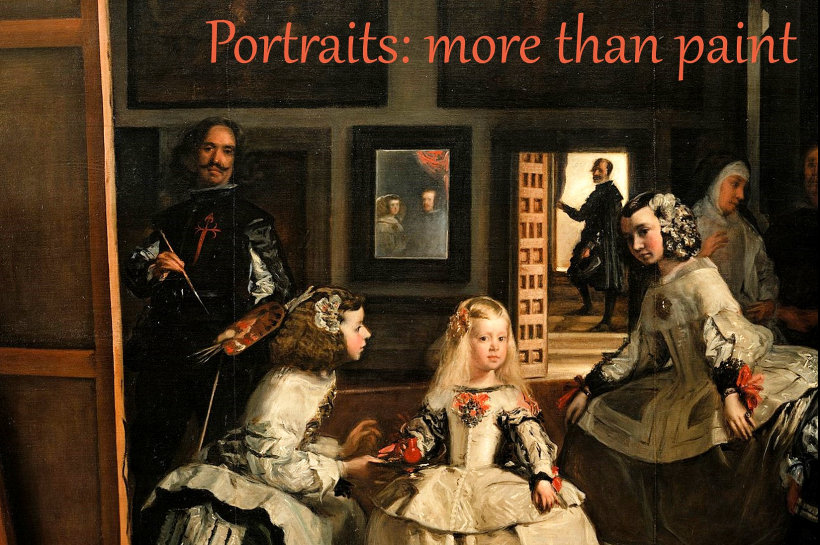3. Famous for What?
What kinds of people typically get their portraits painted? in the first hour, we look at a wall of Georgian
portraits in London’s National Portrait Gallery to find out. There will be the people you might expect:
aristocrats, politicians, military commanders. But there may also be a few who are famous for other reasons,
and they are often the most interesting.
In the second hour, we cast our net wider in terms of nationality and period, to examine three special topics
(with an additional brief glance at portraits of children). First, the implication of action in a portrait.
Second, the comparatively rare instances of nude or partially-nude portraiture. Third, as a parting bouquet,
a small group of people in the performing arts, each with an appropriate audio clip. rb.
The script, videos, and images will be posted immediately after class.
TO THINK ABOUT
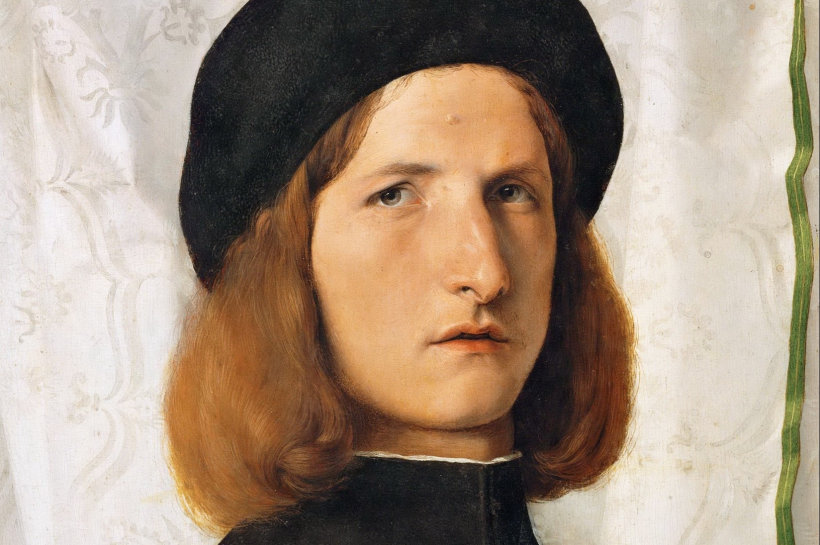
Pictures of Children by Fernand Khnopff (1885) and Mary Cssatt (1878)
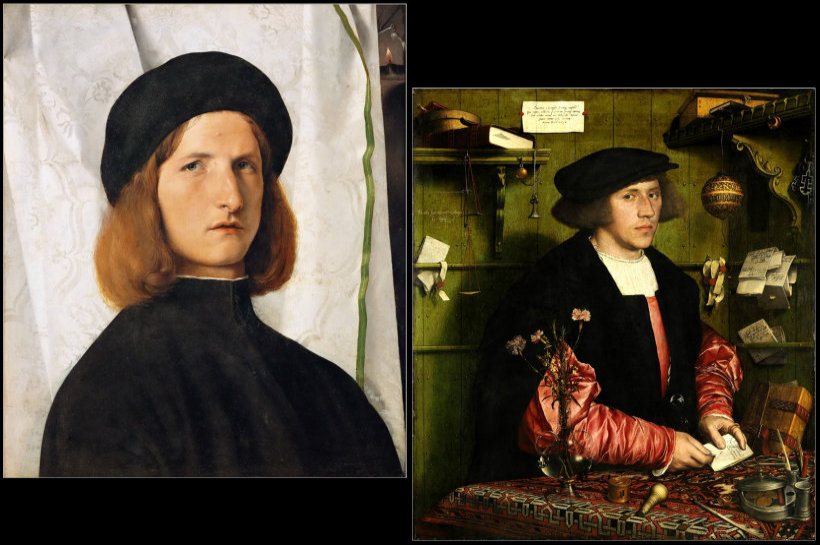
Fernand Khnopff: Jeanne Kefer (1885, Getty Museum)
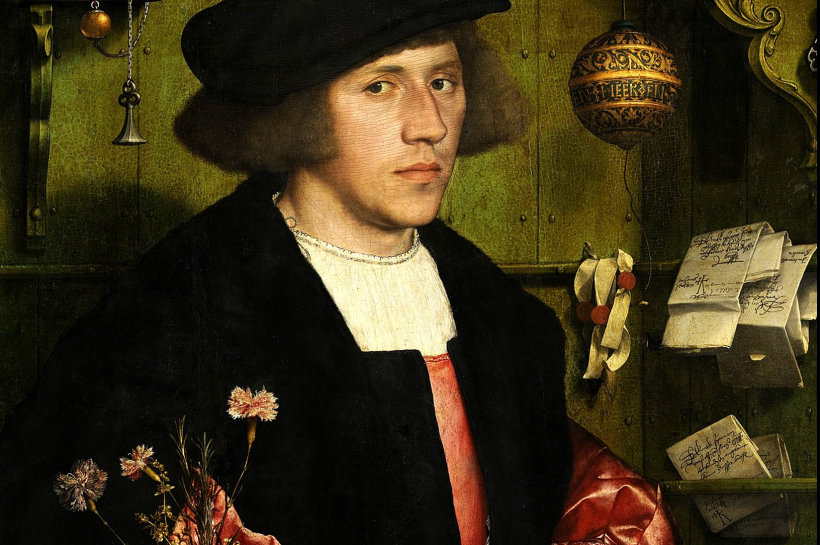
Mary Cassatt: Little Girl in a Blue Armchair (1878, Washington NGA)
These two portraits of children may or may not come into the actual class, depending upon time, but they should make
an interesting comparison to think about now. The similarities are obvious: they are of similar date, and both
feature small girls of a similar age. But think about the differences between them, not only in the treatment of the
figure, but also in terms of design, depth, color, and the handling of paint. What might you guess about the personality
of each girl, and her relationship with the artist? Might you say that the Cassatt is active as opposed to
the stillness of the Khnopff? If so, in how many ways does this activity show?
Here are brief bios of the artists, composers, and writers considered in the class, listed in order of birth.
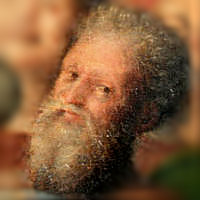 |
Piero di Cosimo, 1462–1521. Italian painter.
A Florentine renaissance painter at the turn of the century, very little is known about him other than the very entertaining account in Vasari's Lives, which is difficult to correlate with actual works.
|
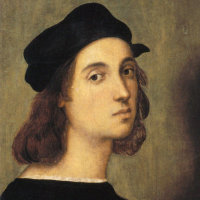 |
Raffaello Santi (Raphael), 1483–1520. Italian painter and architect.
One of the towering geniuses of the Italian Renaissance, Raphael was born in central Italy, and worked there until 1508, when he moved to Rome to decorate several stanze in the Vatican for Pope Julius II, and later his successor Leo X. The influence of these and other works of the period can be seen in religious art for many centuries to come. He was also one of the many architects of St. Peters.
|
 |
Agnolo Bronzino, 1503–72. Italian painter.
Bronzino (the nickname may refer to his dark complexion) trained under Pontormo, the leader of the Mannerist school. His own painting is generally calmer and more elegant, but somewhat cold. In addition to painting many religious and allegorical subjects, he also did numerous portraits as painter to the Medici court.
|
 |
Giovanni Battista Moroni, 1520–78. Italian painter.
Moroni was a Bergamo painter of the Mannerist period, noted for a small number of meticulous portraits and other works produced over a five-year timespan before he went into retirement.
|
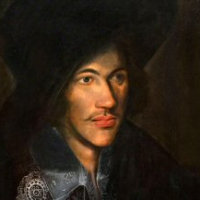 |
John Donne, 1572–1631. English poet and cleric.
Though classed with the Metaphysical Poets of the early 17th century, he had an immense range, from erotic to sacred, characterized by an extraordinary intensity. He took holy orders later in life, and was appointed Dean of St Paul's Cathedral.
|
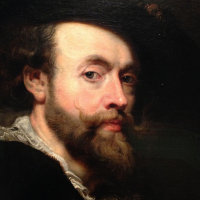 |
Peter Paul Rubens, 1577–1640. Flemish painter and diplomat.
One of the giants of baroque art, Rubens developed the style of Titian into a powerful rhetoric applied equally to sacred and profane subjects, and exerted enormous influence in Spain, England, and France as well as in his native Flanders, continued in the work of his many pupils. His position at so many courts also made him invaluable as a diplomat.
|
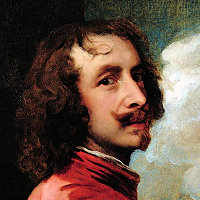 |
Anthony Van Dyck, 1599–1641. Flemish painter.
For a time the principal assistant to Peter Paul Rubens, Van Dyck had a shorter but similarly stellar and varied career, painting in most of the major baroque genres. He was especially known as a portraitist, particularly in England, where he served the courts of both James I and Charles I.
|
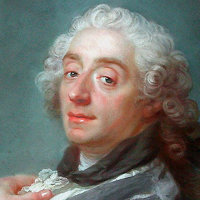 |
François Boucher, 1703–70. French painter.
His many works, which virtually define the French rococo style, include several elegantly erotic treatments of mythological subjects, such as his Jupiter and Callisto, but also genre scenes, erotica, and even landscapes.
|
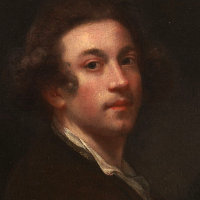 |
Sir Joshua Reynolds, 1723–92. English artist.
Reynolds was the leading portraitist of his day, the first president of the Royal Academy, and an important theorist of art.
|
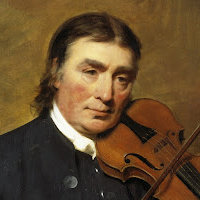 |
Niel Gow, 1727–1807. Scottish violinist.
Gow was a fiddler whose developed a career under the patronage of the Duke of Atholl. The many tunes he wrote (or borrowed) as a composer still form the basic repertoire of Scottish dance music, though there are some such as the moving Lament on the Death of his Second Wife that have an independent existence.
|
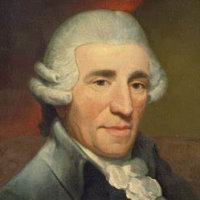 |
Franz Joseph Haydn, 1732–1809. Austrian composer.
With Mozart, Haydn was the leading musical genius of the late 18th century. Equally prolific, but far longer lived, he wrote 104 symphonies, 68 string quartets, 16 operas, and 14 masses, together with the two great oratorios, The Creation and The Seasons.
|
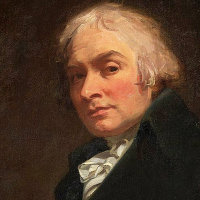 |
George Romney, 1734–1802. English painter.
Born in the Northwest of England, Romney struggled when he came to London in 1762, as he seemed to have earned the enmity of Benjamin West, and was never invited to join the Royal Academy. All the same, he became one of the most successful portraitists of his time, somewhat Romantic in nature, and especially inspired by the actress Emma Hamilton (who was, however, the mistress of Admiral Nelson).
|
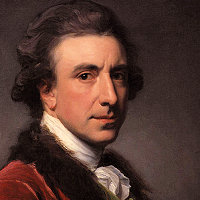 |
Nathaniel Dance, 1735–1811. English painter.
The son of an architect, Dance established himself as a society portrait painter, whose subjects included David Garrick, Captain Cook, and George III. In later life he entered politics and was made a baronet under the title of Sir Nathaniel Dance-Holland.
|
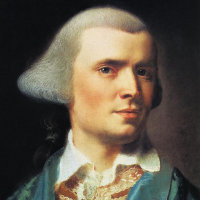 |
John Singleton Copley, 1738–1819. American painter.
Born probably in Boston, Copley esatablished himself as a portrait painter befor moving permanently to London at the age of 36. He cemented his reputation with a number of history paintings such as Brook Watson and the Shark (1778), The Death of Chatham (1781), and several Revolutionary War scenes shown from the British perspective.
|
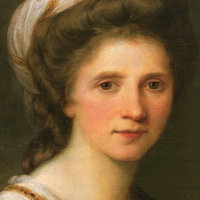 |
Angelica Kauffmann, 1741–1807. Swiss painter.
Moving to London in her twenties, she became a foundation member of the Royal Academy as a portrait painter, but moved to other subjects, first in England and later in Italy.
|
 |
John Francis Rigaud, 1742–1810. French-Italian painter.
Born in Italy of a French family, Rigaud nonetheless spent most of his career in England, where he was a member of the Royal Academy. His oeuvre is roughly divided by portraits (including Reynolds and Nelson) and history paintings.
|
 |
William Hodges, 1744–97. English painter.
Hodges "was a member of James Cook's second voyage to the Pacific Ocean and is best known for the sketches and paintings of locations he visited on that voyage, including Table Bay, Tahiti, Easter Island, New Zealand, and the Antarctic." {Wikipedia]
|
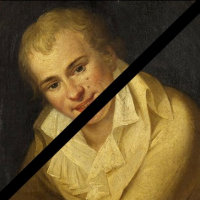 |
Anton Hickel, 1745–98. Austrian painter.
Born in Bohemia, Hickel spent most of his career in Vienna and other cities in continental Europe. However, a stay in London in the 1790s enabled him to paint the House of Commons and many of its luminaries, most of which pictures are now in the National Portrait Gallery. [The image is by him, not of him.]
|
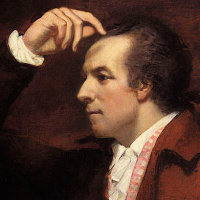 |
James Northcote, 1746–1931. English painter.
A pupil of Reynolds, he was moderately successful as a painter of portraits and histoical subjects, and also wrote on the history of art.
|
 |
Friedrich Heinrich Füger, 1751–1818. German painter.
Though born and trained in Germany, Füger was Court Painter in Vienna for most of his career. It was there that he painted his portrait of Horatio Nelson, who was passing through, the only one to depict the Admiral in civilian clothes.
|
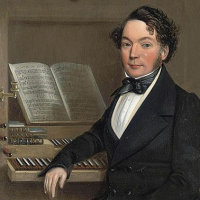 |
John Marsh, 1752–1828. English composer.
Marsh was an English composer of the classical period whose works, eclipsed for a while, are now enjoying a limited revival. A lawyer by profession, he also pursued interests in astronomy and philosophy.
|
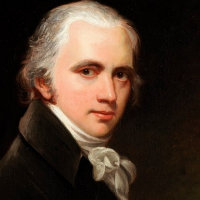 |
William Beechey, 1753–1839. English painter.
The son of a country lawyer, Beechey trained for the law himself, before pursuing a full-time career as a portraitist—on that eventually included an appointment at the royal court. John Constable was one of his pupils.
|
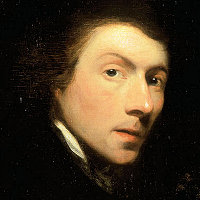 |
Gilbert Stuart, 1755–1828. American painter.
Although a patriot, Stuart, who was born in Rhode Island, went to Britain in 1775 and studied with Benjamin West, mking his name with his 1782 full-length portrait of Sir William Grant (The Skater). He returned to the US in 1793 (leaving many commissions unfinished) and there became the de facto presidential portraitist, painting all six of the first Presidents.
|
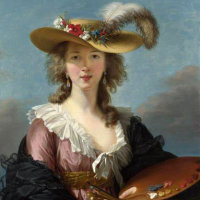 |
Élisabeth Vigée Le Brun, 1755–1842. French painter.
Specializing in portraiture, Vigée-Lebrun had charm and wit to match her talent, which won her many influential patrons, most notably Queen Marie Antoinette. She fled France at the Revolution and lived in London, Italy, Vienna, and St Petersburg, where she was part of the court of Catherine the Great. Her memoirs are a vital testament of her times and her own remarkable strengths as a woman.
|
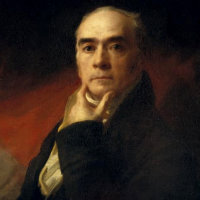 |
Sir Henry Raeburn, 1756–1823. Scottish painter.
The leading Scottish portrait painter of his time, noted for the forthright quality of his technique, giving his figures an outstanding presence.
|
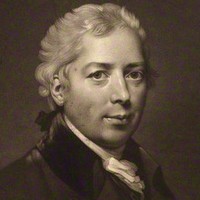 |
Lemuel Francis Abbott, 1760–1803. English painter.
Working in London, Abbott has a successful career as a portraitist (painting Admiral Nelson among others) until he went insane.
|
 |
Samuel Drummond, 1766–1844. English painter.
In his youth, Drummond served an apprenticeship as a merchant seaman and, after training at the Royal Academy schools, he specialized in subjects from British maritime history.
|
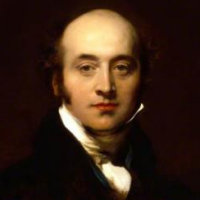 |
Sir Thomas Lawrence, 1769–1830. English portraitist.
The outstanding portrait painter of the early 19th century, Lawrence combined truth to the character of his illustrious patrons with a Romantic flair for brushwork and color.
|
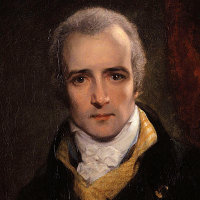 |
Thomas Phillips, 1770–1845. English painter.
Among the leading portraitists in the first decades of the 19th century, Phillips painted artistic figures such as Blake, Byron, and Dibdin, and scientific ones such as Banks, Davy, and Faraday, in addition to the usual complement of politicians and aristocrats.
|
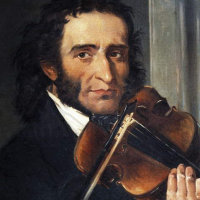 |
Niccolò Paganini, 1782–1840. Italian violinist and composer.
A virtuoso in the manner of a modern rock star, Paganini drew huge audiences wherever he played. Such was his virtuosity that he was rumored to be in league with the Devil. But there was nothing meretricious about his technique, which expanded greatly upon traditional practice, nor in the many works he wrote to play himself and challenge others.
|
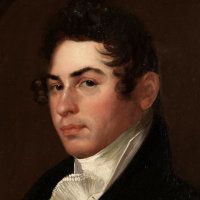 |
John Neagle, 1796–1865. American painter.
A pupil of Thomas Sully, Neagle became the most fashionable portrait painter in Philadelphia. The realism of his Pat Lyon at the Forge is therefore not typical of him, but was done at the request of the sitter.
|
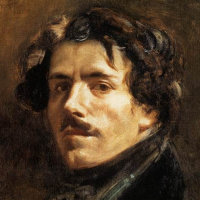 |
Eugène Delacroix, 1798–1863. French painter.
The leading French painter of the Romantic movement, he is known for his brilliant Rubensian color and his dramatic compositions. Especially in the first half of his career, these included political themes, such as The Massacre at Chios (1824) and Liberty Leading the People (1830), as well as subjects from Romantic literature. He also visited North Africa, and was constantly fascinated by the exotic.
|
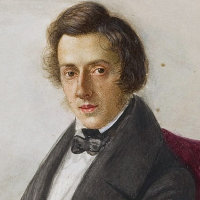 |
Fryderyk Chopin, 1810–49. Polish composer.
Chopin was a virtuoso pianist (though for the most part avoiding the concert stage), and wrote almost exclusively for the piano, in a variety of shorter forms, many reflecting the dances of his native Poland, which he left at age 20 to escape the consequences of a revolution. He spent his adult life in Paris, where he was a frequent guest at salons. He maintained a long relationship with the writer George Sand.
|
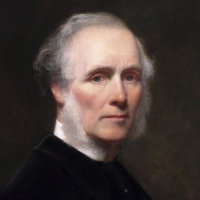 |
William Powell Frith, 1819–1909. English painter.
Frith began his career as a portrait painter (his subjects including Charles Dickens), but branched out to literary and genre subjects and the vast panoramas of contemporary life such as Derby Day and Railway Station that became his best-known legacy.
|
 |
Florimond Ronger (Hervé), 1825–92. French composer.
Ronger, who worked under the pseudonym Hervé was a singer, composer, conductor, theater manager, and scene painter. Beginning at the the Théâtre du Palais Royal in 1851, he launched the operetta form in France, paving the way for Offenbach, whom he originally invited to Paris, before falling out with the more successful composer.
|
 |
Robert Howlett, 1831–1858. English photographer.
A pioneering photographer, Howlett photographed the Crimean War then numerous events in Britain, including the construction of the world's largest steamship, the SS Great Eastern, under its architect IK Brunel. He also took photographs for the painter William Powell Frith to aid him in his large compositions.
|
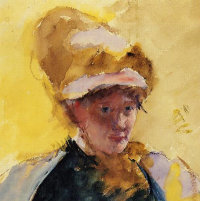 |
Mary Cassatt, 1844–1926. American painter.
The daughter of a wealthy Philadelphia family, Cassatt studied in Paris and settled there in 1874. She became friends with the Impressionists, especially Degas, and exhibited in four of their shows. An early feminist, her own work featured especially the everyday lives of women. She also had an influence in persuading her wealthy friends back home to buy Impressionist paintings.
|
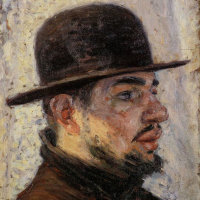 |
Henri de Toulouse-Lautrec, 1846–1901. French painter.
A hunting accident in childhood (he came from an aristocratic family) left Toulouse-Lautrec permanently stunted in stature, but this condition gave him both an entrée into the seamier side of Paris and the realism to depict it as he found it, with plenty of glamor certainly, but without idealization or moralizing.
|
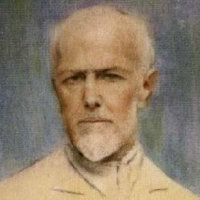 |
Fernand Khnopff, 1858–1921. Belgian painter.
Although allied with the Symbolist movement, Khnopff was a very private person and his works seem to hide behind their smooth pale surfaces and almost photgraphic detail.
|
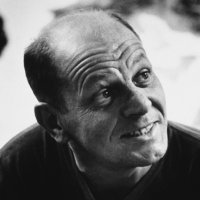 |
Jackson Pollock, 1912–56. American painter.
For many people, Jackson Pollock's "drip paintings," created by pouring paint directly onto raw canvas attached to the studio floor, are the defining image of Abstract Expressionism, and certainly the source of the alternative description, "Action Painting." But Pollock, who was born in Wyoming, studied with Thomas Hart Benton, and worked in the WPA project of the 1930s, reached this style only through a long process of moving through a kind of semi-abstract surrealism.
|



